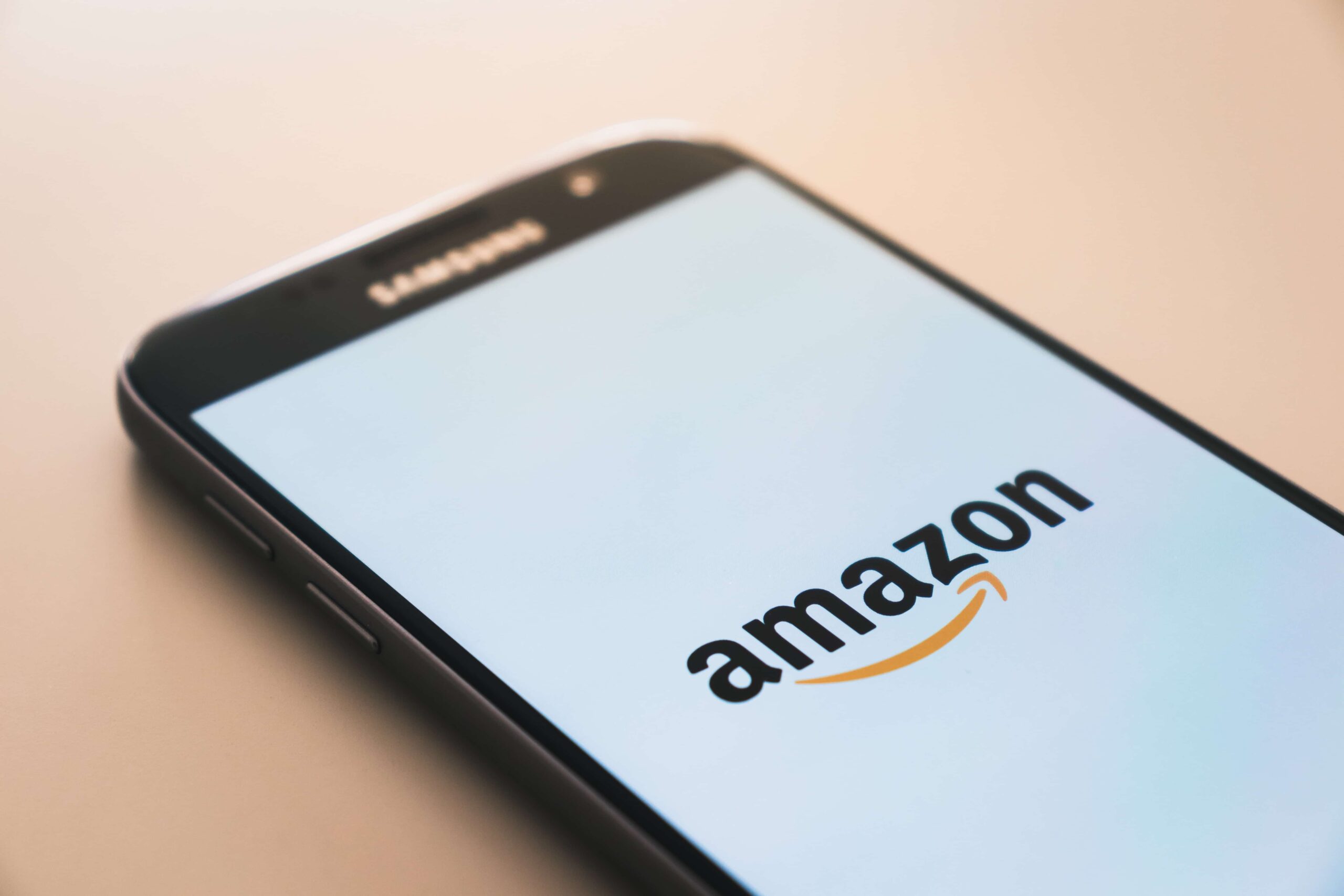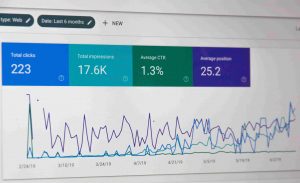The 11-Point Amazon Product Launch Checklist
Your latest product masterpiece has emerged from the depths of development, poised and ready to conquer the market. But here’s the secret sauce to ensuring its triumphant reign at the top of the Amazon search results – the Product Launch Checklist!
Picture this: a dazzling listing with a magnetic title, mesmerizing images, enlightening bullet points, and a product description that leaves customers eager to click ‘Add to Cart.’ Oh, and don’t forget those stealthy back-end search term optimizations.
The stage is set, your target audience awaits; what are you waiting for? It’s time to unleash your product’s full potential. Let’s dive right into the action!
If you prefer to watch videos rather than read an article, I get it! Check out this guide by Aussie Online Entrepreneurs for a different perspective on our Amazon product launch checklist.
The 11-Point Amazon Product-Launch Checklist
Step 1: Identify Your Target Audience
It’s important to identify and understand your target audience before launching your product so that you can tailor the later steps to the people you have in mind.
When defining your target audience, keep in mind:
- Who makes up your audience, and what are their desires and requirements?
- What issues can your product address for them?
- Which keywords are they using in their searches to address these concerns?
- How frequently do they purchase such products, and what prompts their buying decisions?
- What obstacles might they encounter when purchasing this product from other sellers?
If you need a hand discovering your target audience, check out our complete guide here.
Step 2: Set Realistic Goals

Establishing sales targets and other key performance indicators aids in the efficient allocation of marketing resources and ensures sufficient inventory planning. Determine the quantity of products you aim to sell within a specific timeframe before you publish on Amazon.
A crucial part of predicting sales involves setting your initial product pricing. Take into account competitor pricing for similar products, along with selling expenses and fees that can influence your sales strategy.
You can learn more about identifying valuable key performance indicators (KPIs) and creating an effective pricing strategy in these 2 linked guides.
Step 3: Create an Effective Marketing Plan
Prior to the launch, it’s crucial to strategize your marketing efforts to efficiently engage active buyers. Evaluate your existing presence on various marketing channels, identify your target audience’s online hangouts, and understand their buying journey. Here are some questions to guide you:
- Which marketing channels will you initiate?
- How will you customize your branding and packaging, if at all?
- What sets your product apart, and what’s your unique selling point?
Step 4: Create a Beautiful Storefront

A captivating storefront is the cornerstone of a successful product launch. Whether you’re piquing interest across multiple channels or just one, your storefront serves as the hub where curious shoppers can explore and buy.
You have two options: create a regular Amazon product listing or, if you’ve enrolled in Amazon’s Brand Registry program, craft immersive product detail pages using A+ Content for your private brand.
Think about how you’ll narrate your product’s story with sharp, vivid imagery and enticing product descriptions.
Step 5: Optimise Your Amazon Product’s Keywords
Conducting keyword research is a valuable component of launching a new product on Amazon. Incorporate pertinent keywords into your listing’s title, product description, and bullet points.
Think about incorporating general keywords that provide a broad product description. Additionally, consider utilizing more specific keywords that distinctly highlight your product’s unique qualities. These specific terms often face less competition, making it easier for shoppers to discover the distinctive features and benefits.
For example, if your product is a new phone holder, alongside the general term ‘phone holder,’ include keywords like ‘compact,’ ‘strong’ and ‘designer’ to showcase its unique attributes.
Step 6: Chose an Effective Title for your Amazon Listing
Craft an enticing Amazon listing title within 150-200 characters. Use relevant keywords and make the text compel the potential customers to explore your product further.
Step 7: Take Relevant Photos

A picture tells a thousand words, so it’s important to make sure that your Amazon photos are top-notch to improve sales.
You should make sure that you use all 7 photos that Amazon allows you to upload with captivating pictures showcasing the advantages of your product. Amazon product photos must be 1300 x 1300 pixels and should clearly highlight everything that your target audience might want to know about your product.
Step 8: Read Up On Amazon’s Seller Code of Conduct
Whether you’re introducing a new product or selling established ones, it’s important to keep to Amazon’s Seller Code of Conduct and the Amazon Services Business Solutions Agreement in order to keep your storefront online.
You can read these documents here.
Step 9: Start Advertising
The next step is to start advertising to get some initial sales for your product. If you’ve already got a website, social media presence or email list, leverage these mediums to gain some initial traction.
Additionally, you can use targeted paid advertising campaigns to further promote your product. These can be:
- Sponsored Products: These campaigns help you reach high-intent shoppers actively searching for products related to yours.
- Sponsored Brands: Showcase your brand and product collection to shoppers interested in similar items.
- Sponsored Display: Extend your reach to a broader audience, even beyond active Amazon shoppers, through display advertising.
Step 10: Create a Product Video

Video is an excellent medium to highlight your new product’s advantages and showcase its ease of use.
Brand owners can upload videos to their online storefront, complementing product descriptions and images to narrate their brand’s story. Additionally, product videos can prove valuable across various social media platforms.
Here are some pointers for creating effective product videos:
- Keep the video concise and to the point.
- Consider incorporating text to ensure the video’s message is clear even without sound.
- Close-ups, general product comparisons, and instructional elements can enhance viewer understanding and engagement.
Step 11: Manage Your Inventory
While gaining momentum, ensure ample inventory to prevent customer letdown. Excel in inventory management and select fulfilment methods for swift, dependable deliveries. Then, explore diverse strategies to expand sales and bolster your brand.
Amazon FBA
Amazon FBA (Fulfillment by Amazon) is a service offered by Amazon that allows sellers to store their products in Amazon’s fulfilment centers. Amazon then handles the storage, packing, shipping, and customer service for these products. Here’s why FBA is useful for selling your product:
- Prime Eligibility: FBA products are eligible for Amazon Prime and Amazon’s free shipping programs. This makes your products more attractive to Prime members, who tend to shop more frequently and spend more.
- Trust and Customer Confidence: Customers often trust and prefer products fulfilled by Amazon, as they are familiar with Amazon’s reliable and fast shipping service. This can lead to higher conversion rates and fewer abandoned shopping carts.
- Global Reach: FBA allows you to easily expand your customer base to international markets. Amazon handles international shipping, customs, and customer service, simplifying the process for you.
- Customer Service: Amazon’s customer service team deals with returns, refunds, and customer inquiries on your behalf, saving you time and effort.
- Multi-Channel Fulfillment: You can use FBA to fulfill orders from other sales channels, not just Amazon’s platform. This means you can streamline your entire e-commerce operation, making it more efficient.
- Storage and Logistics: FBA takes care of inventory management, including storage, picking, packing, and shipping. This can be a significant advantage if you lack the space or resources for warehousing and fulfillment.
- Buy Box Advantage: FBA products often have an advantage in winning the Buy Box (the featured offer on a product listing) due to Amazon’s trust in their fulfillment process and commitment to fast shipping.
- Prime Pantry and Subscribe & Save: FBA can also make your products eligible for programs like Prime Pantry and Subscribe & Save, further increasing your product’s visibility and sales potential.
- Easy Scalability: FBA can accommodate a wide range of product sizes and volumes, making it suitable for both small-scale and large-scale sellers.
If you’re concerned about the logistics of setting up your Amazon store, we’d recommend you check out FBA when sorting out your inventory management. Click here to learn more.
Amazon Product Launch Checklist Template
To make sure that you don’t forget any of these important steps when launching your new Amazon product, we’ve created a handy checklist template for you to follow along with.
Amazon Product Launch Mistakes To Avoid

After discussing the steps for a successful product launch, it’s crucial to be aware of the mistakes you should steer clear of to ensure a smooth launch strategy.
- Neglecting a Proper Marketing Plan: Your products won’t sell themselves amidst fierce competition. Relying solely on chance is risky. Create a comprehensive marketing plan from initial promotion to email newsletters. It’s your roadmap to success.The “Build it, and they will come” approach doesn’t always work, especially on Amazon. A robust Amazon PPC advertising plan and keyword optimization are essential for a strong start.Consider launching both on and off Amazon, using deep links that incorporate targeted keywords in the URL. This approach boosts Amazon sales and improves your visibility.
- Underestimating Customer Engagement: Ignoring customer engagement can be detrimental. In the age of rapid social media sharing, public perception matters. Create buzz around your product, engage with customers on platforms like Facebook, Twitter, and YouTube, and gauge their pre-launch reactions.Positive engagement indicators like comments, likes, and shares on social media, as well as higher open rates for pre-launch newsletters, can predict your product’s potential success.
- Maintain a High Amazon IPI Score: Amazon’s Inventory Performance Index (IPI) measures your inventory efficiency and directly impacts product visibility. A high IPI score reflects efficient sales.To maintain a high IPI, remove underperforming products and focus your resources on promoting well-selling items through advertising.
- Anticipate the Unexpected: Despite meticulous planning, unforeseen variables can affect your launch. Competitors raising keyword bids on PPC can reduce your external traffic. Prepare for such scenarios and maintain a realistic outlook during your launch.
- Continuously Optimize Your Listings: Never stop optimizing your product listings. Keep an eye out for opportunities to enhance keywords and improve organic traffic, which can lead to more customers and initial sales during the launch.Learn from competitors and implement effective strategies to refine your listings further.
- Leverage Amazon Advertising: Amazon advertising is vital for new product launches. Without organic rankings, you can’t rely on free traffic. Advertising increases visibility and drives sales velocity, essential for Amazon’s A10 Algorithm to boost organic rankings.
Ensure a strong advertising and marketing plan supports your product launch for a successful outcome. Without a robust advertising strategy, any launch is at risk of falling short.
Key Takeaways
- Identify Your Target Audience: Understand your potential customers’ desires and needs, keyword preferences, buying habits, and potential purchasing barriers before launching your product.
- Set Realistic Goals: Establish sales targets and pricing strategies to efficiently allocate resources and ensure sufficient inventory planning.
- Create an Effective Marketing Plan: Develop a comprehensive marketing strategy covering various channels, customizing branding, and highlighting your unique selling proposition.
- Craft a Beautiful Storefront: Whether a standard product listing or A+ Content for Brand Registry members, create an engaging storefront with compelling imagery and descriptions.
- Optimize Keywords: Perform keyword research to incorporate relevant terms into your product listing, balancing general and specific keywords for better discoverability.
- Design an Enticing Title: Create a captivating, 150-200 character title with relevant keywords to encourage potential customers to explore your product.
- Utilize High-Quality Images: Use all 7 available images to showcase your product’s advantages clearly. Ensure images are 1300 x 1300 pixels.
- Familiarize Yourself with Amazon’s Seller Code of Conduct: Adhere to Amazon’s policies and guidelines to maintain a fair selling environment.
- Initiate Advertising: Begin advertising to gain initial traction for your product. Leverage existing channels and explore paid advertising options like Sponsored Products, Sponsored Brands, and Sponsored Display.
- Incorporate Video Marketing: Utilize video to demonstrate your product’s benefits and ease of use, enhancing customer engagement across various platforms.
- Efficient Inventory Management: Maintain adequate inventory levels to prevent customer disappointment. Optimize inventory performance for successful sales and brand growth.
- Consider Amazon FBA: Explore the benefits of Fulfillment by Amazon (FBA) for efficient storage, packing, and shipping, along with access to Prime eligibility and global reach.
FAQs
How Long Does it Take to Launch a Product on Amazon?
The timeline for launching a product on Amazon varies depending on your preparation efforts. Generally, it takes about a month on average to fully prepare and execute a successful product launch. This includes securing your product source, shipping inventory, and planning your advertising strategy.
How Much Does it Cost to Launch an Amazon Product?
The cost of launching an Amazon product depends on various factors, particularly the nature of the product you intend to sell. Consider these key expenses:
- Product costs
- Inventory storage fees
- Marketing expenses (e.g., email campaigns, discount offers, vouchers)
- Advertising costs (e.g., flyers, pay-per-click ads) Carefully budget for these elements to estimate your total launch costs.
What Defines a Successful Product Launch on Amazon?
A successful product launch on Amazon encompasses several achievements:
- Generating sales velocity
- Creating substantial demand
- Building popularity for your product
- Improving your organic search ranking The crucial “honeymoon period,” typically the first two weeks after the launch, is pivotal. It’s essential to secure enough initial sales during this period to attain high organic rankings on Amazon’s search results.
What’s The Best Day to Launch a Product on Amazon?
Our research suggests that Sunday is the optimal day to launch a product on Amazon. On Sundays, people tend to be more relaxed and have more time to browse the Amazon app. This increased leisure time can lead to higher purchase intent compared to busier weekdays like Monday or Tuesday.
Why Do Most Product Launches Fail on Amazon?
The primary reason for most product launch failures on Amazon is inadequate preparation. Some individuals underestimate the complexity of launching a product, assuming that customers will automatically find and purchase it once listed online. To achieve a successful launch, thorough preparation is essential. Address potential challenges, plan for worst-case scenarios, and overprepare to minimize room for errors. Proper preparation is the key to a successful Amazon product launch.
Overview
Now that you understand how to launch your product on Amazon, have a look at our Amazon product launch guide as well as our complete guide to launching a product.







